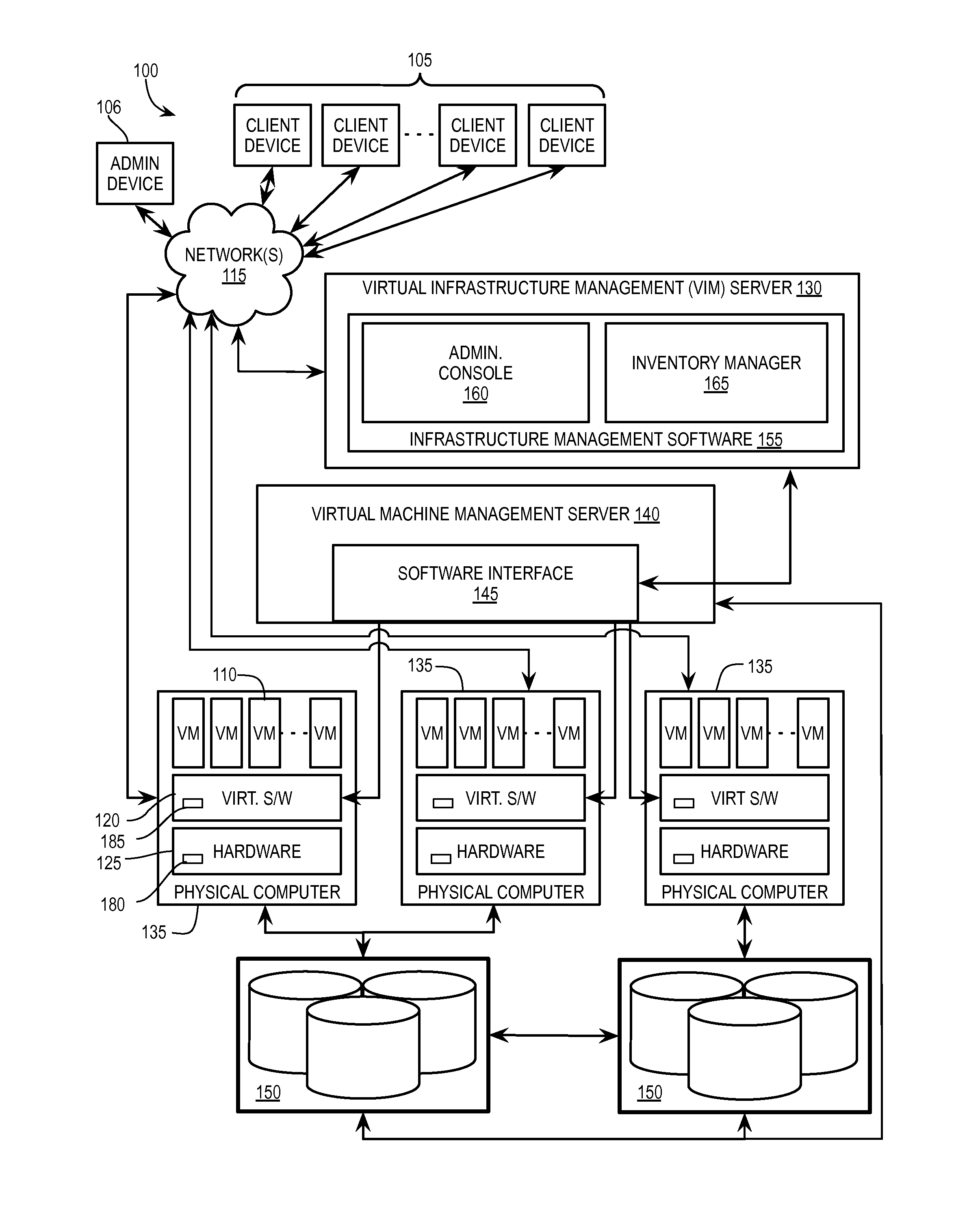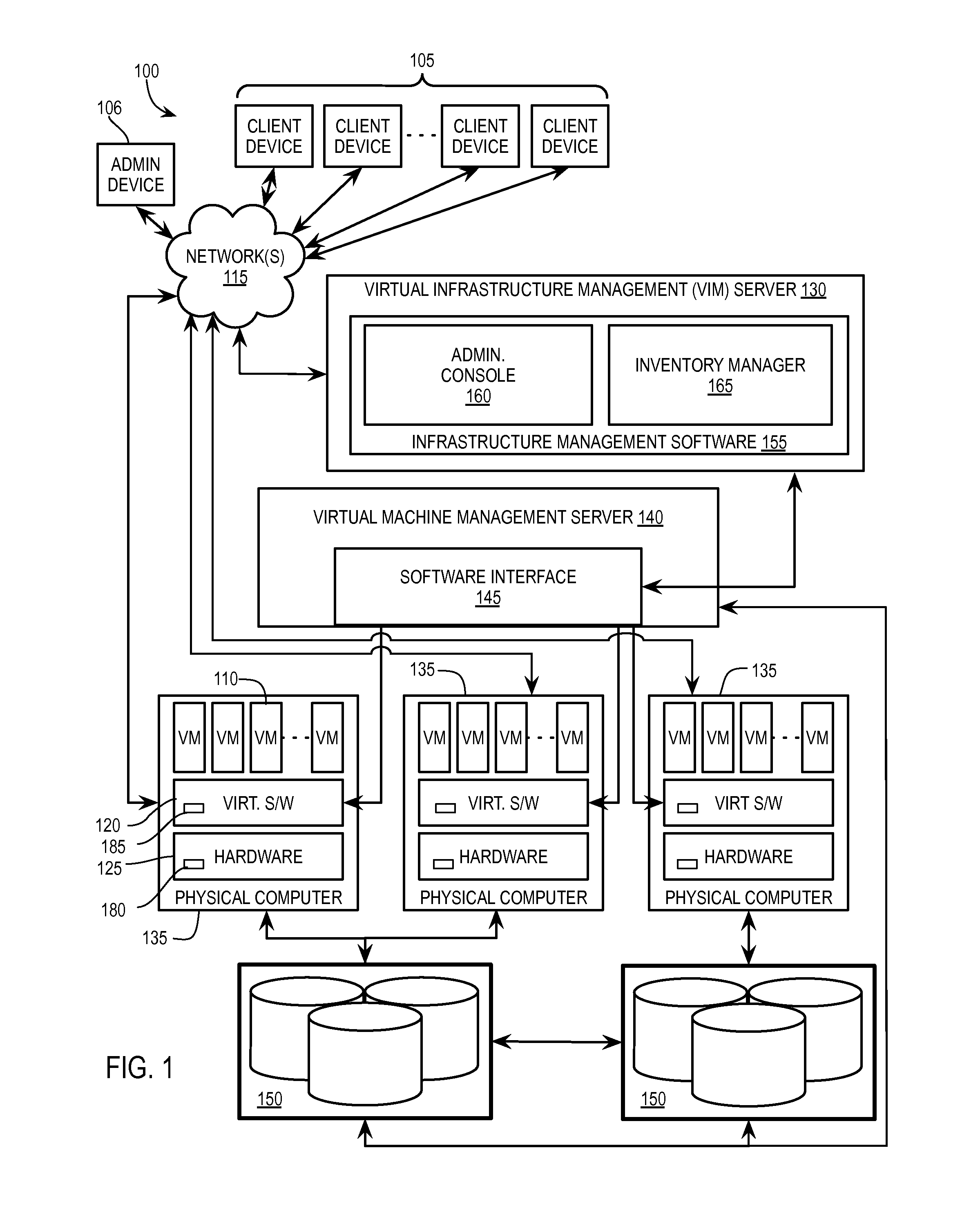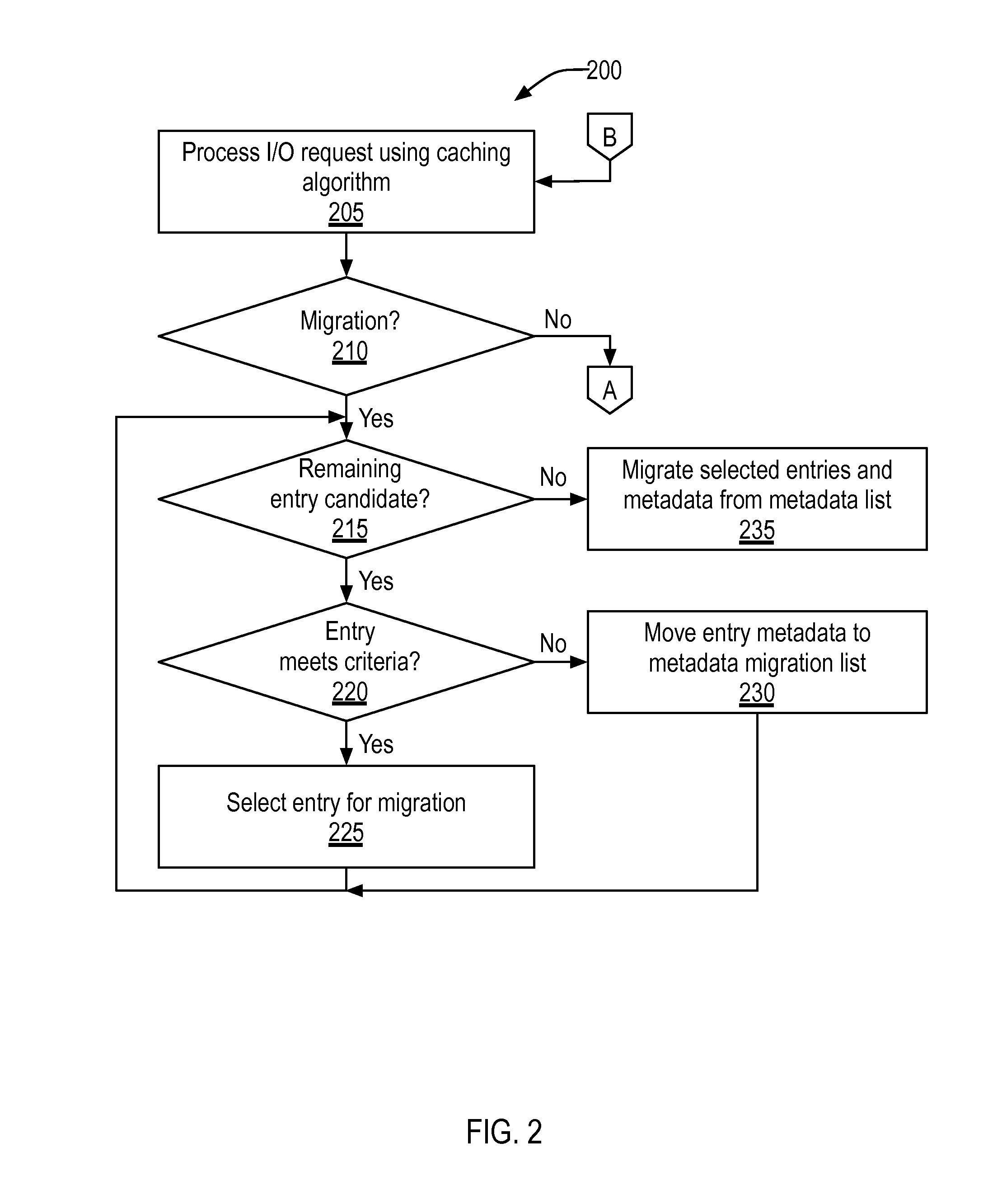Cache migration
a technology for migrating caches and i/o data, applied in the direction of memory adressing/allocation/relocation, input/output to record carriers, instruments, etc., can solve the problems of large caches that take a long time to repopulate with i/o data, vm will suffer a loss of performance,
- Summary
- Abstract
- Description
- Claims
- Application Information
AI Technical Summary
Benefits of technology
Problems solved by technology
Method used
Image
Examples
first embodiment
[0032]In a first embodiment, cache agent 185 selects up to a first threshold amount of the first list of cache entries (e.g., T1) and up to a second threshold amount of cache entries in the second list of cache entries (e.g., T2). In other words, a cache entry meets the criteria for migration if it is within the threshold amount of entries. The first and second threshold amounts may be the same or different from one another. A threshold amount may be a percentage of a list, a number of entries from a list, a percentage of a list up to a threshold number of entries, an amount of memory used to store entries (e.g., in bytes), etc. For example, for an ARC cache (or another cache that tracks recent use of cache entries), cache agent 185 selects 25% the most recently used entries from T1 and 30% of the most recently used entries from T2. The size of the selected subset of cache entries can be a static / default amount, a user configurable parameter, or determined by cache agent 185 based o...
second embodiment
[0033]In a second embodiment, cache agent 185 tracks the overall hit rate for each of the first and second lists, T1 and T2, individually (e.g., as described with reference to FIGS. 3-4). For example, a cache hit in one list counts as a cache miss in the other list. Similar to the embodiment above, cache agent 185 selects up to a predefined / preconfigured threshold amount of cache entries in the second list of cache entries (e.g., a percentage or number of the most recently used entries in T2). The amount of T1 to migrate, however, is determined by the size of the selected subset of T2 and the cache hit rate of T1 and T2. The size of the selected T1 subset is derived by the following adaptive formula: the size of the T2 subset multiplied by T1's cache hit rate divided by T2's cache hit rate. For example, for an ARC cache (or another cache that tracks recent use of cache entries), cache agent 185 selects the most recently used entries from T2 up to a threshold amount and the most rece...
third embodiment
[0034]In a third embodiment, cache agent 185 maintains a frequency bit for each cache entry in T2 (e.g., as described with reference to FIG. 3). Cache agent 185 sets the frequency bit if an entry in T2 is accessed again subsequent to the access that caused the entry to be added to T2. A cache entry in T2 meets the criteria for migration if the entry's frequency bit is set. Similar to the embodiment above, a cache entry in T1 meets the criteria for migration if it is one of the most recent entries in T1 up to a threshold, e.g., as defined by the result of the adaptive hit rate formula.
PUM
 Login to View More
Login to View More Abstract
Description
Claims
Application Information
 Login to View More
Login to View More - R&D
- Intellectual Property
- Life Sciences
- Materials
- Tech Scout
- Unparalleled Data Quality
- Higher Quality Content
- 60% Fewer Hallucinations
Browse by: Latest US Patents, China's latest patents, Technical Efficacy Thesaurus, Application Domain, Technology Topic, Popular Technical Reports.
© 2025 PatSnap. All rights reserved.Legal|Privacy policy|Modern Slavery Act Transparency Statement|Sitemap|About US| Contact US: help@patsnap.com



